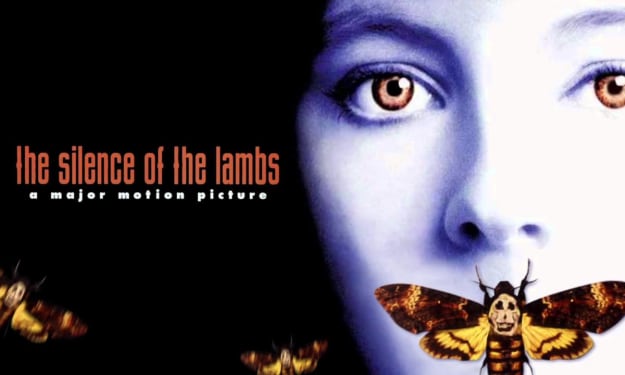A Filmmaker's Guide to the Horror Techniques Used in 'Get Out'
Study, Experience, and Analysis

(Note: this article will contain analysis on the film 'Get Out' and so, in order to get the most out of the article it is recommended that you watch the film at least once over).
Get Out was one of the biggest films of its year, being a popular horror-comedy with a dark satirical message behind it. An amazingly made film with brilliant themes and cinematography, it succeeded in being the best original script after winning the Academy Award for it and being nominated for three others. We will not be focusing on the apparent social and political message of the film, instead we will look at simply the portrayal of themes to do with horror. Let's have a look at the three themes we're going to cover:
- Suggestions of Violence
- Antagonism
- Darkness
Let's go through the analysis then.
Suggestions of Violence
Get Out is filled with the indirect suggestion of violence, the way in which this is achieved is through moments of tension regarding the placement of violence. This means that we get small silences, tension and then, someone suggesting violence in a way that may seem appropriate for the moment in the film.
Let's take a look at the scene:
The suggestion of violence really comes through in the momentary silences of this scene. We hear the movements and footsteps, we hear the drill, we know violence is possible. There's little else in the noises and, through creating this tension, it can really make an atmosphere build up to a sort of climax. The climax of this film starts near the end and so, having this scene in the build up would be very important in order to achieve the tension we have in the climactic scene.
It's a common effect used in the suggestion of violence in many horror films and if you wanted to achieve this in your own project then you should be aiming to reduce any background noise, amplifying the noises of footsteps and movements. Also, beware of overusing this technique as if it is overused, it can look cliché and messy therefore, it would be unable to build the tension required.
Antagonism
Antagonism is an incredible theme that is explored in Get Out not only by its "message" but mostly by the way in which the movie is filmed. Looking at various aspects of sound, movement, design etc. we are able to recognise the antagonists before the antagonism has even been established. It's a difficult thing for a film to achieve without being cliché, but it is highly effective if done correctly.
Let's take a look at the scene:
If you have a look at this scene, we can see the actual distance between Chris and Rose, thus representing the antagonism that becomes apparent later on in the scene. It is important to put characters that are questionable in morals between them to show how it is highly possible for a character to be an antagonist. The reaction of Rose is purely there to manipulate Chris and, as the scene focuses on her antagonism by having a close up of the keys upon her fingers, we can tell she is actually the antagonist. It is these small details that tell us she is manipulative and that she is the main antagonist of the scene.
If you want to use this technique then you need that fine line between manipulation and antagonism to happen through the most tense scene, preferably the one before the climactic scene. This will make sure that you audience has that moment of realisation that this is the actual antagonist - thus, giving them the moment of thought about the manipulation that has happened throughout the film.
Darkness
Darkness is a massive theme in pretty much any horror film, but to build on the theme of satire, Get Out uses it in a very literal way. This does not mean it has little effect, it is actually highly effective for portraying the satirical sub-genre it stands in. Without this clarity, it would be pretty difficult to see that particular aspect of the film.
Let's take a look at the scene then:
The way in which darkness is used in this scene is very suggestive of the violence that is to follow, but also the manipulation by the woman in the scene. It could also signify the satire of the scene by having this control element from one character to another become so over-the-top that it becomes almost fantastical as an element that cannot exist in reality. However, creating too much atmosphere would have thrown this scene completely off track and it wouldn't have achieved what it was set out to do. Here, we see a number of close ups, a correct build of tension without being cliché and then, we bring in the element of darkness which has to override most of the tension elements in the scene.
It is very easy to get carried away with darkness, especially as it represents an element of satire - so if you're going to use this style then I'd steer clear of overloading your scene with characters and props. Have a good empty scene in which to create tension, close ups and bring in the climactic darkness and have it overwhelm the tension in order to create that solid idea of satire.
Conclusion
There is no doubt about the fact that Get Out was the horror-comedy of the decade and it has several great themes to analyse. If you wanted to investigate further, you could explore:
- Character Symbolism
- Entrapment
- Idealism and Villainy
Good luck on your next project!
About the Creator
Annie Kapur
200K+ Reads on Vocal.
English Lecturer
🎓Literature & Writing (B.A)
🎓Film & Writing (M.A)
🎓Secondary English Education (PgDipEd) (QTS)
📍Birmingham, UK






Comments
There are no comments for this story
Be the first to respond and start the conversation.